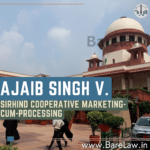
Table of Contents
R.B. Policies At Lloyd’s v. Butler, adjudicated in 1949 | BareLaw
Introduction
This decision in property rights and the Limitation Act of 1939 is important. The argument is about a stolen car which ended up at Mr. Alfred Butler who was an innocent purchaser of the said motorcar. The main legal question involved whether the plaintiff’s claim was time-barred under the Limitation Act which prohibits actions to be brought after six years have passed from when the cause of action arose.
Background
In 1940, this particular motor car belonging to R.B. Policies at Lloyd’s was stolen. It changed hands without knowledge of the original owners several times over a period of seven years and later on came into possession of Mr Butler. In 1947, this car was discovered with Mr Butler hence precipitating an action by the original owners for its recovery through legal processes.
Issues And Arguments Of Law
The key point here was when did their cause of action on recovery begin for theft? No action can be commenced under Legal limitation act after six years from that point. The plaintiffs argue that it occurred during theft while defendants insist it could only have happened where there were persons they could sue.
Analysis and Decision By Court
While presiding over this case, Justice Streatfeild examined closely such occurrence. He stressed that there must be two parties; one capable suing and other sued- this according to existing law provisions in such cases (Jervis, 2014).To him, any other person even if unknown took it or lost a car in 1940 affirmatively stole it. This he did by giving weight to principles underlying limitation act ones designed for protecting unblamed out-citizens against bars being called back many years subsequently by selling them innocently-held lands.
Implications Of The Ruling
It is important because it shows how to strike a balance between rights of bona fide purchasers and real owners.It demonstrates why limitation period matters in legal claims so as to seal laws against antique suits that may affect innocent third party buyers.
Conclusion
This case R.B. Policies At Lloyd’s v. Butler (1949) is an illustration of how property law changes and the way it is interpreted in various scenarios. There has been a guideline to interpretation of Limitation Act as regards stolen articles and subsequent purchasers who are innocent third parties. This represents a landmark in UK legal jurisprudence which draws a fine line between protection of property rights and prevention of injustice.





